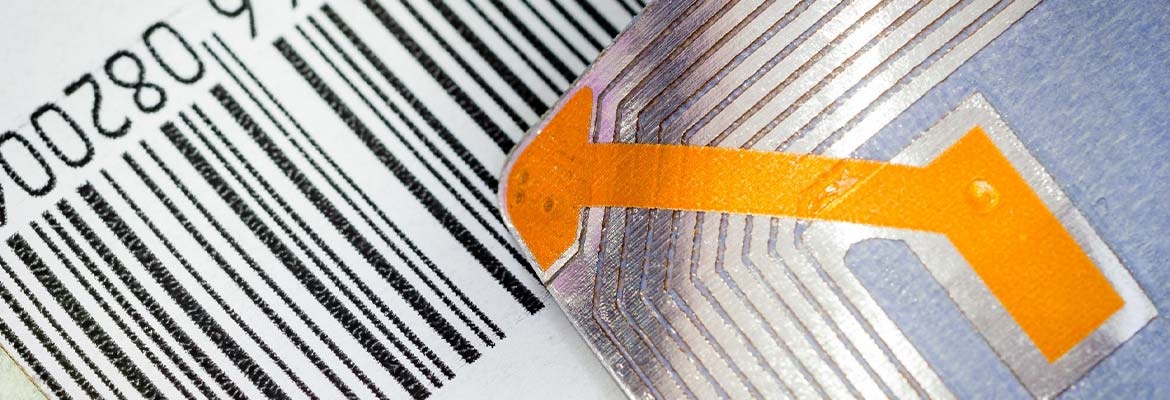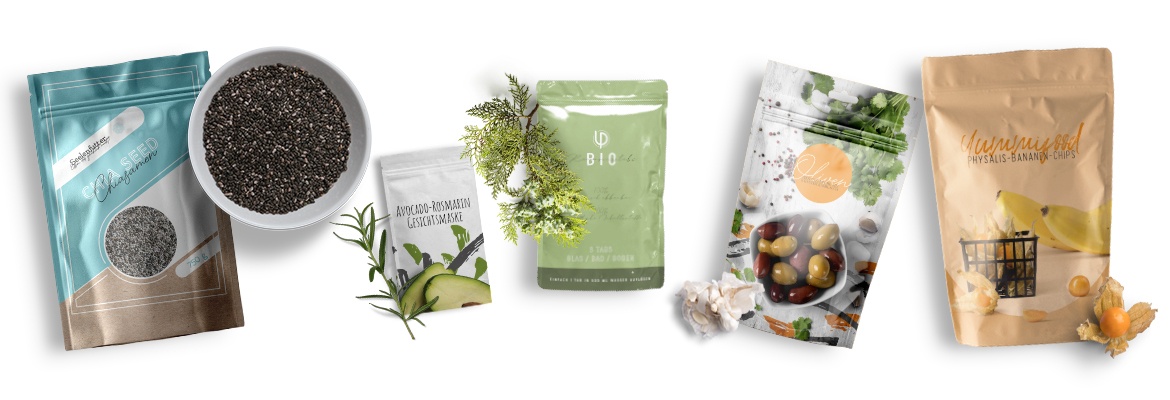
Printing industry under pressure: The Corona update
- The persistence of the Corona pandemic continues to hit the printing industry hard: a slight economic upturn in 2021 is therefore followed by gloomy prospects for the 2022 financial year.
- Supply shortages and rising costs are not only driving up the price of print products - they are causing many companies to cut back on production activity.
- Opportunities in the pandemic? Above all, the strong growth in the e-commerce sector opens up good opportunities for the printing industry.
- Countering the effects of the pandemic with innovations: Automated, digital workflows help keep up with the speed of e-commerce - but the conditions for comprehensive restructuring have rarely been worse.
Concerns in the German print and media industry persist, clouding the mood with a view to the future. Yet the economic situation had recovered compared to 2020. According to surveys conducted by the Ifo Institute on behalf of the German Printing and Media Industries Federation (bvdm), the 2021 business climate index was consistently above the previous year's level.
However, the current development of the infection situation and the force of the fourth Corona wave has once again put a damper on the industry's expectations for the coming year. The consequences of the ongoing pandemic are evident in many areas.
UPS AND DOWNS IN THE BUSINESS CLIMATE INDEX
industry in November 2021 was at a comparatively good level - at least with regard to the past year. Since July 2021, however, the bdvm-economy telegram has shown a continuous downward trend. Compared to the previous month, the value for November, therefore, represented a further drop of 2.6 percentage points.
Similar developments can be traced for the business situation and business expectations:
- The business situation index fell again after an increase in October. At 99.4 points, it fell below the pre-crisis level of February 2020.
- Business expectations, on the other hand, appear more stable. At 99.7 points in November 2021, they are at a similar level as in the previous year - but about 4 points below the value before the crisis.
Of the participating companies, however, only 13 per cent still expect to produce more in the next three months. In contrast, 25 per cent of the companies expect a decline in production.
According to the forecast of the business consulting firm Apenberg & Partner (A&P), the views on the market development are more or less balanced: While 32 per cent expect a downturn, 29 per cent expect an upward trend. The remaining 39 per cent, on the other hand, expect the market situation to remain the same. But how likely is that, given the problems that are already having a noticeable impact?
SCARCE RAW MATERIALS, RISING COSTS
BBy 2020 it was already clear that the printing industry was facing various difficulties. This concerned, for example, the order books, which were becoming increasingly thin due to the generally depressed economy. To compensate for pandemic-related consequences such as the loss of advertising and leaflet printing, many companies made structural changes - but the result is an ongoing spiral in which no improvement is yet in sight.
WHAT TO DO WHEN ORDERS DON'T COME IN? NEW MARKETS FOR THE PRINTING INDUSTRY
Due to the numerous restrictions aimed at breaking the first Corona waves in 2020, many companies were forced to cut back their production sharply and sometimes completely. Short-time work and state aid were intended to avoid a drop in sales, as were far-reaching savings in expenses.
Often enough, this affected the marketing budgets that otherwise finance advertisements and brochures for the print media. In 2020, the daily newspapers were therefore confronted with a loss in advertising revenue of around 18 per cent, in advertising papers, it was as much as 24 per cent. Accordingly, fewer orders went to the companies in the printing industry as a result.
Under these conditions, many companies embarked on a structural change and turned to markets that continue to promise growth opportunities. These are found in particular in the production of corrugated cardboard: because online retailing has become even more important in the wake of the pandemic, there is enormous demand here - unlike for graphic paper, for example.
Here, demand has been declining for several years. Since 2012, it has fallen by more than 15 million tonnes - that is 44 per cent less.
TOO LITTLE WASTE PAPER: DISTURBED RAW MATERIAL CYCLES IN THE PRINTING INDUSTRY
In the medium run, however, the interaction of these factors proves to be a problem. This is because the developments cannot be considered separately and influence each other:
- Due to the decline in the printing of advertisements and brochures, significantly less waste paper has been in circulation since the beginning of the pandemic.
- The production of corrugated cardboard and similar products for shipping mainly uses waste paper. A lack of raw materials and rising demand have therefore led to shortages and disrupted supply chains.
- At the same time, capacities for the production of graphic paper have been reduced (totalling 8.2 million tonnes since 2016) and are now lacking. However, this is not the only problem - because the share of cardboard and graphic paper in waste paper has shifted, the quality required for the production of graphic paper is often no longer achieved.
The shortage of raw materials, which the industry associations warned about last year, is not only reflected in the disruption of supply chains and production processes. It is particularly noticeable in the prices.
.jpeg)
INCREASED DEMAND, LOW AVAILABILITY: COMMODITY PRICES EXPLODE
So the price increases are not hitting the industry unprepared; the signs were already there in 2020. This is why hardly any companies in the printing industry are expecting an improvement: in A&P's Print Business Autumn Forecast 2022, 98 per cent of participants said they expected supplier prices to rise.
The question here is therefore not whether the price increases will come, but how severe they will be. According to the Federal Statistical Office, the wholesale prices for paper and cardboard residues for paper and cardboard production were almost 193 euros per tonne in October 2021. For comparison: In October 2020, the price was 81 euros per tonne. This corresponds to an increase of around 138 per cent over the course of a year.

Loading...
So far, the situation is less drastic for the prices of corrugated paper and cardboard as packaging materials. However, this is mainly due to the continuously high prices, which have remained at an almost constant level since 2018. Since the summer of 2021, however, the trend for these paper products has also been pointing upwards.
The fact that industry giants like Amazon and other global players in online retail have bought up large stocks early on exacerbates the shortage of resources - and forces smaller companies that can no longer pay the high prices out of the market.
FROM LOGISTICS TO ENERGY: EVERYTHING IS GETTING MORE EXPENSIVE
However, it is not only the rising raw material prices that are clouding the mood within the printing industry. Costs are also going up in other areas.ADDITIONAL COSTS FOR LOGISTICS
Paper manufacturers are particularly affected by the additional costs for logistics. This is because the pulp for paper production is imported from outside of Europe. However, the Corona pandemic has caused freight rates in maritime trade to rise sharply - and thus also reduced the availability of containers for transport.The increased demand has therefore also driven up the prices for shipping containers. In some cases, manufacturers have to pay four times as much as in the previous year - the cost of a container is sometimes well over 6,000 US dollars.
.jpeg)
ADDITIONAL COSTS FOR THE ENERGY SUPPLY
Another cost factor that will be felt by many companies in the printing industry from next year at the latest: rising energy costs. Among the member companies of the Paper and Film Packaging Industry Association (IPV), 85 per cent expect higher costs.
For electricity supply, the expectations are for prices to rise by up to 60 per cent. Even with long-term contracts, the cost increase can hardly be absorbed, according to IPV Managing Director Karsten Hunger. Conversely, this means that production costs will increase overall.
On average, manufacturing companies expect additional costs of around 20 per cent. Print manufacturers must therefore be prepared for price increases - even if it is not yet clear to what extent the higher costs will be passed on to them.
At the same time, the price trend affects the printing companies themselves. After all, according to the bvdm, electricity procurement costs account for around a quarter of prices. Because there is no sign of a downward trend in the prices of energy-related raw materials, for the time being, the printing industry will also have to find solutions in 2022 to compensate economically for the additional costs.
BETWEEN INSOLVENCY AND STATE AID
Until the end of March, companies in the printing industry at least still have the opportunity to take advantage of financial support from the state. The Federal Ministry of Economics and Technology and the Federal Ministry of Finance agreed on the 24th of November 2021 on an extension of the transitional aid programme. The transitional aid IV will largely take over the previous conditions and application procedures.The programme runs until the 31st of March 2022 and provides, among other things, a reimbursement of fixed costs. In addition, equity grants are possible for companies that were hit particularly hard by the Corona pandemic. This also applies to closures.
CLOSURES AND INSOLVENCIES IN THE PRINTING INDUSTRY: HOW BAD IS THE SITUATION REALLY?
DThe forecasts for the entire industry were not particularly optimistic even at the beginning of the pandemic. As early as March 2020, the A&P agency had warned of an increasing number of insolvencies. However, of the 118 expected insolvencies, "only" 84 occurred in the course of the year.
In comparison: in the previous year 91 companies from the print and media industry filed for insolvency. Even the 104 insolvencies forecast for 2021 are still a far cry from the 233 insolvencies in the crisis year of 2009.
.jpeg)
Despite everything, these figures are no cause for celebration, especially since they may conceal the real situation in the industry. The obligation to file for insolvency was suspended until the end of April 2021, so the extent of the closures may only become clear after a delay.
To make matters worse, conditions have worsened in many areas compared to 2020. The slight recovery of the business situation that could be observed in the course of the year is on shaky ground in view of raw material shortages and rising costs.
PANDEMIC ACCELERATES BUSINESS CLOSURES
The extent of the Corona pandemic can only be determined to a limited extent. The fact is that parts of the printing industry have been struggling for some years: Declining print media circulations, less advertising in the print sector, a shortage of skilled workers - many problems existed even before the pandemic.
In this respect, it has an accelerating effect. Companies that have so far missed out on a possible or necessary restructuring are now facing even worse conditions. Because innovations require investments. And these are not realistic for many companies in the current economic situation.
UNCERTAIN OUTLOOK FOR THE PRINTING INDUSTRY
So the situation remains uncertain for the time being - and not only - for companies in the printing industry. In addition to economic factors, the development of infection in Germany is also responsible for this.Continued high numbers of cases and the new Omicron variant of the Coronavirus are a source of uncertainty, despite effective vaccination. Lockdowns on the scale of the first year of the pandemic are not planned for the time being, although they have been instrumental in breaking previous Corona waves. However, the economic damage was enormous across sectors.
Despite the growth opportunities in many areas - for example in connection with booming e-commerce - long-term forecasts are therefore difficult. After all, 2021 has shown that the printing industry is capable of positive developments even in times of crisis.
- Sources
- BDVM: Konjunkturtelegramm November 2021
- BDVM: Steigende Einkaufskosten verlangen nach höheren Verkaufspreisen der Druckindustrie (Pressemitteilung, 26.11.2021)
- BDVM: Corona-Wirtschaftshilfen (Meldung, 25.11.2021)
- Beyond Print: Insolvenzen in der Druckindustrie – Lagebericht und Ausblick
- Bundesministerium für Wirtschaft und Energie/Bundesministerium der Finanzen: Bedingungen für Überbrückungshilfe IV stehen (Gemeinsame Pressemitteilung, 2.12.2021)
- Druck & Medien: Wie hart trifft Corona die Druckbranche? (8.7.2021)
- Frankfurter Allgemeine Zeitung: Medien fehlt das Werbegeld (27.5.2021)
- Handelsblatt: Verlage und Druckereien leiden unter Papiermangel (4.9.2021)
- Kunststoffweb: Containerfracht – Globales Logistikchaos lässt Preise explodieren (23.4.2021)
- neue verpackung: Alles zum Thema Rohstoffmangel und Preiserhöhungen in der Verpackungsindustrie
- neue verpackung: Energiekosten – Hersteller von Papier- und Folienverpackungen rechnen mit weiterer Kostensteigerung (25.10.2021)
- Statistisches Bundesamt (Destatis): Preise. Index der Großhandelsverkaufspreise – Altpapier und Altmetalle (bis Oktober 2021)
- Tagesschau: Warum das Altpapier knapp wird (21.9.2021)
- Verband Druck und Medien Rheinland-Pfalz und Saarland e.V.: Steigende Einkaufskosten verlangen nach höheren Verkaufspreisen der Druckindustrie (26.11.2021)
- Verband Druck und Medien Rheinland-Pfalz und Saarland e.V.: Branchenumfrage belegt schwierige Aussichten für die Betriebe (6.7.2021)
- Verband Druck und Medien Rheinland-Pfalz und Saarland e.V.: Branchenumfrage belegt schwierige Aussichten für die Betriebe (6.7.2021)
- Verband Druck und Medien Rheinland-Pfalz und Saarland e.V.: Branchenbericht belegt historisches Tief für Druck- und Medienwirtschaft (21.6.2021)
- Zentralverband der deutschen Werbewirtschaft ZAW e.V.: Netto-Werbeeinnahmen der Medien 2020
These articles might also interest you:

Megatrend Silver Society and the impact on the packaging industry
Society is getting older and older: between 2000 and 2018, the proportion of people over the age of 65 increased by almost 10 per cent, according to the Federal Institute for Population Research. Senior citizens thus make up around one-third of the total population, and the trend is still rising.

Safety first: How packaging provides more safety
Packaging offers safety on various levels, because it not only protects the packaged goods, it is also an important means of ensuring for the manufacturing companies and customers alike that the packaging really contains what it is supposed to contain.

Labelprint24 - Calculate pouch packaging live and delivery in record time!
Labelprint24 continues to expand its product range and in the future will also offer pouch packaging in various designs in addition to roll labels, folding boxes and tubes. To this end, Labelprint24 invested in a new, larger printing machine and a pouch machine in 2020.








 Roll labels request form
Roll labels request form  Booklet labels request form
Booklet labels request form  Folding boxes request form
Folding boxes request form  Custom made shipping boxes request form
Custom made shipping boxes request form  Package leaflets request form
Package leaflets request form  Laminate tubes request form
Laminate tubes request form 



















